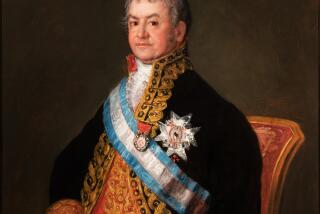Retiree kept art hidden to the end
LONDON -- Jean Preston could have bought a lot of frozen dinners with the proceeds of two Fra Angelico altarpieces. But she preferred to keep the paintings in her spare room.
Preston, a retired curator, lived off her pension and ate frozen dinners in a small Oxford home until she died in 2006. When her executors had her artwork appraised, they found that her ordinary two-bedroom home was filled with famous manuscripts and paintings worth $8 million.
Two altarpiece panels painted by Italian Renaissance artist Fra Angelico were sold at auction last year for about $3.9 million. Most of the remaining works will likely be displayed in the Ashmolean museum in Oxford, British officials said this week.
“It was her wish that they would go there,” said Guy Schwinge of Duke’s of Dorchester auction house.
Schwinge was able to negotiate an agreement with the government to have the paintings displayed instead of paying inheritance tax.
Preston’s executors hope her works will be placed in the Oxford museum, “which would be a very neat end to the story, as they hung in a tiny house around the corner,” Schwinge said.
Preston’s collection included two valuable pre-Raphaelite pieces: an 1866 watercolor of Hamlet and Ophelia by Dante Gabriel Rossetti that was found in the kitchen and an oil painting titled “Music” by Sir Edward Burne-Jones, found hanging above Preston’s electric fireplace.
Preston inherited much of her art from her father, a collector who bought the two Fra Angelicos in the 1960s.
Preston’s executors also discovered a rare edition of Chaucer in her dresser drawer. Her collection of manuscripts by the “Spanish Forger” -- who deceived the art world by creating false medieval manuscripts in the 19th century-- will go to the Victoria and Albert Museum in London.
Preston was a curator of manuscripts at the Huntington Library in San Marino, and at the Princeton University Library. According to Michael Liversidge, former dean of Bristol University’s art department, she learned of the Fra Angelicos’ significance five years before she died, when she asked for help at Bristol, her alma mater, in identifying the pictures.
When she discovered they were by Fra Angelico, the monk who is now in the process of sainthood, the mystery was solved. But she kept the altarpieces behind the door of her spare room, which she used as a study.
Preston’s family said she lived a simple life and though she knew a lot about medieval literature, she knew little about art.
The Italian government was outbid last year at auction when an anonymous European bidder bought the Fra Angelicos.
More to Read
The biggest entertainment stories
Get our big stories about Hollywood, film, television, music, arts, culture and more right in your inbox as soon as they publish.
You may occasionally receive promotional content from the Los Angeles Times.










